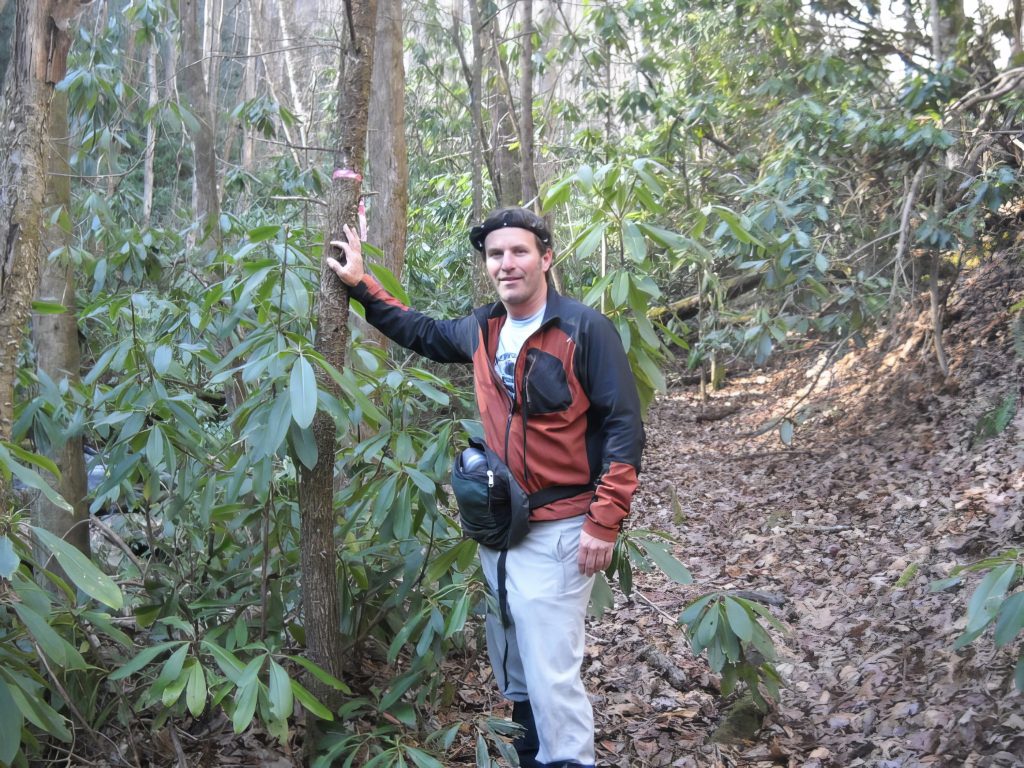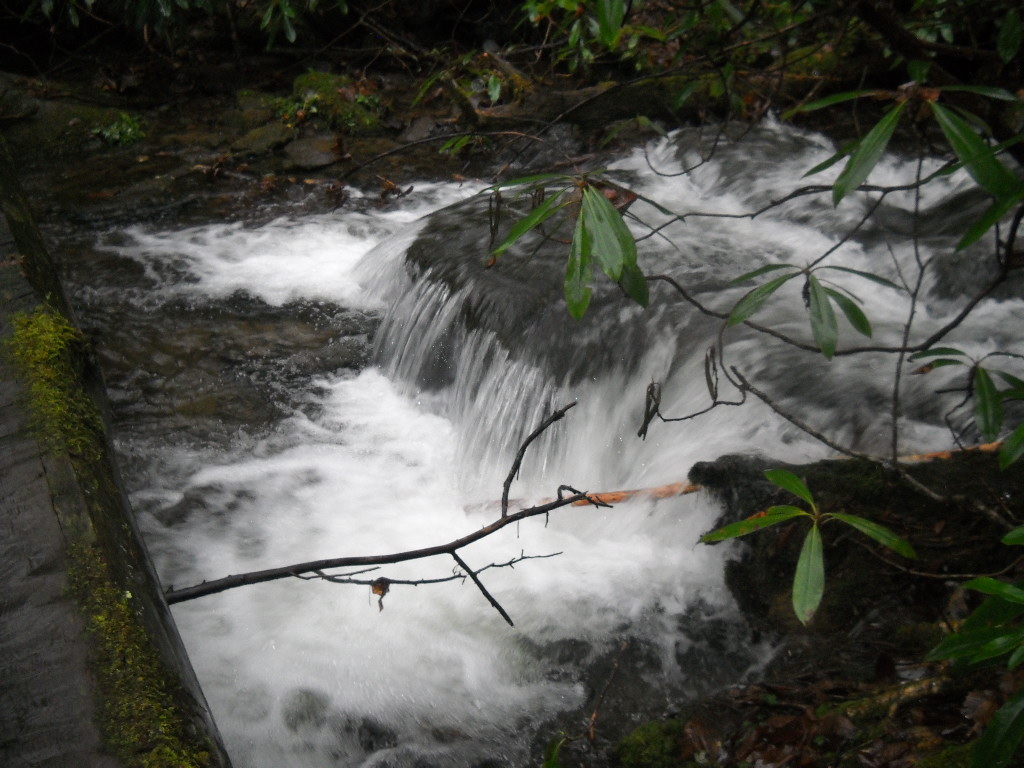The search for a forgotten crossing from North Carolina to Tennessee
My relationship with Ekaneetlee runs as long as the creek. Since first reading of this secret passage from North Carolina into Tennessee, I was consumed with a desire to follow its genesis from Fontana Lake. Research into this defunct trail was as thin as the crossing itself. Some had heard of or done the shorter Tennessee section, but no one would claim any successful attempts of the longer Carolina “trace.” It was not looking as if anyone had moved through here in quite a while though, and following one stretch during which I was simultaneously ensnared in saw briars and dog hobble, I convinced myself of the minimal likelihood of popularizing this bushwhack.

They call it a trace, and anyone who has been briar bit and rhodo slapped chasing manways understands why. Having followed similar traces along abandoned routes before, you begin to realize the accuracy of that word in relation to this path. In these places you feel for traces of the people who crossed and their reasons for passing. Little remains now to indicate human beings ever stepped into this drainage. But the Cherokee regarded Cades Cove as a place of commerce and forged this path into our Tennessee valley. Pro-Union sympathizers fled North Carolina’s borders across this trail into Tennessee as well. They say at one time you could have driven a wagon from the Cove over Doe Knob and back down the mountains into Native American land.
This manway’s obscurity is beholden to access. Unlike more popular Tennessee side off-trail routes such as Porter’s Creek, the main obstacle is just getting to Ekaneetlee Creek. For us—my off-trail-enthusiast friend, Steve, and me—it meant a two-hour drive to Fontana marina across the notorious Dragon of US 129. If a couple hundred curves in 11 miles does not wear you out, then a one-and-a-half-hour canoe paddle across the frigid channel into the headwaters of Eagle Creek might. Assuming the former did not turn you around, a quarter-mile backpack to base camp and all the creek crossings could. We stashed the canoe, established base camp, and settled in for the next day’s mission. This is really no day hike.
Hour three on this crisp, November morning found us at the confluence of a creek running in from the north which appeared to be a drainage off Little Grill Ridge. We had walked Lakeshore Trail to campsite 89. From what I remembered of the topography map, climbing would start here for certain. In the shadow of Hurricane Mountain, I crawled through rhododendron following hog wallows. Sometimes a bear-scratched tree would pop up along with other signs of their passing. How the Native Americans knew it was a low point along the spine of what now is the Appalachian Trail, I will never know. Ekaneetlee is hick for Egwanulti, which in Cherokee means “by the river.” We were in their river and climbing their river.

We pulled ourselves through tunnels of rhodo and dog hobble. At hour four, we paused to measure the lowering sun. My accomplice, Steve, gave me that look of desperate times. The AT ran one of the ridges ahead; did it circle around this hill to our right? It was worth a shot. We hunkered down and lunged up, pulling small saplings from their roots. A few more feet and that blessed trail would have to appear. As I crested that razor ridge nothing but disappointment greeted our soaked skeletons as we muscled our way into the setting sun.
Hour five was grim. It was late afternoon, and our creek was but a trickle that I waded with squishy boots. Steve hopped back and forth. That V in the gap was suddenly upon us as we rushed forward pulled by the promise of a trail. As the gap eventually leveled and ultimately began to drop across the invisible state line, so did our spirits.
Sunset was fading into the lights of Maryville as we descended a bit more. Completely immersed now in a patch of mixed hardwoods, we entered another dimension of mystical forest. Fanning out to net trail in the remaining light, we simultaneously stumbled into a flat stretch, topping out on the Appalachian Trail. Steve resisted the urge to kiss the ground as winds from this notch whistled through our chilling cores. It was cold and my boots were not getting any drier. We had around two trail miles left to climb up to Doe Knob so we could immediately lose all that elevation by then descending six miles back to camp. Our elevation here was 3,842 feet. Our quest began that morning at Lake Fontana, at 1,760 feet—and none of the climbing was done on any real trail.
Our return is best described as dark, undulating until the Gregory Bald trail terminus, and interspersed with mirages. Steve spied a campfire that was nothing more than a visual created by alpenglow filtering through beeches and birch. I would have mine a few miles later after we dropped back down into Lost Cove via one of the steepest maintained trails in the Great Smoky Mountains National Park. It was a gigantic lizard on a log when we resumed our crossings back on the Carolina side. Steve reassured me that it was just a broken piece of bark. It could have just as easily been Gollum. I was strung out in the hills again. But we had completed the magic crossing into Tennessee.

Comments are closed.